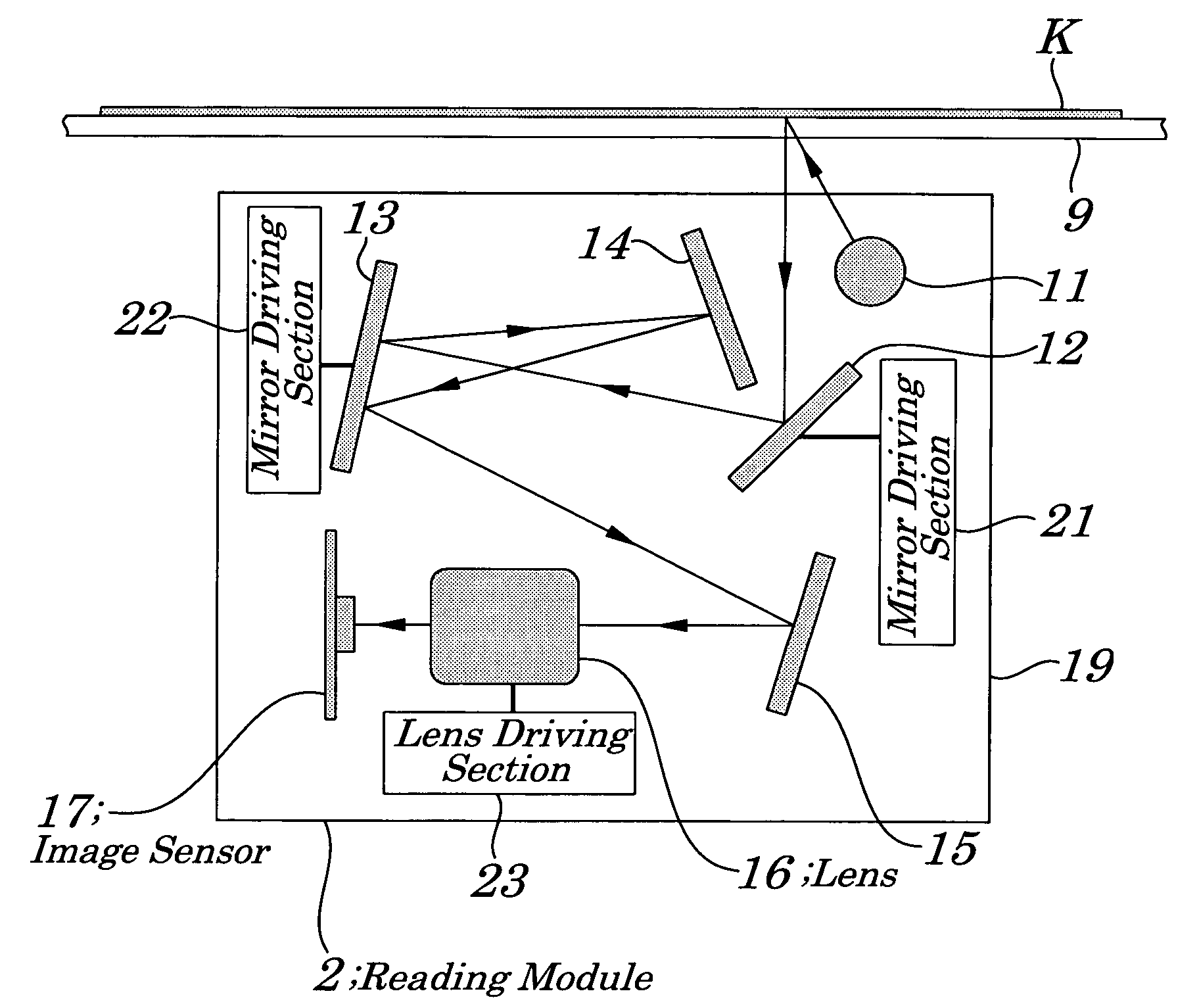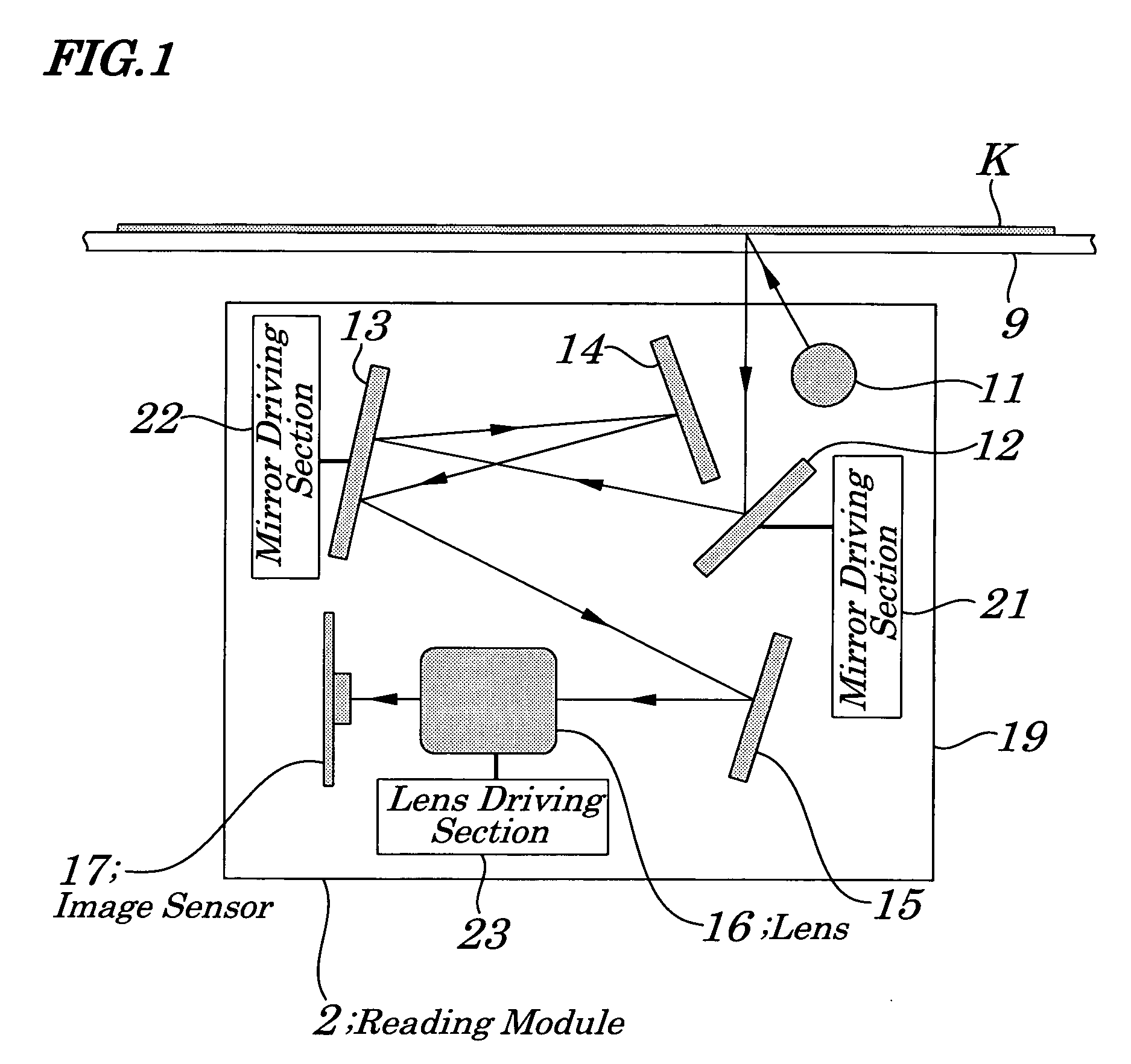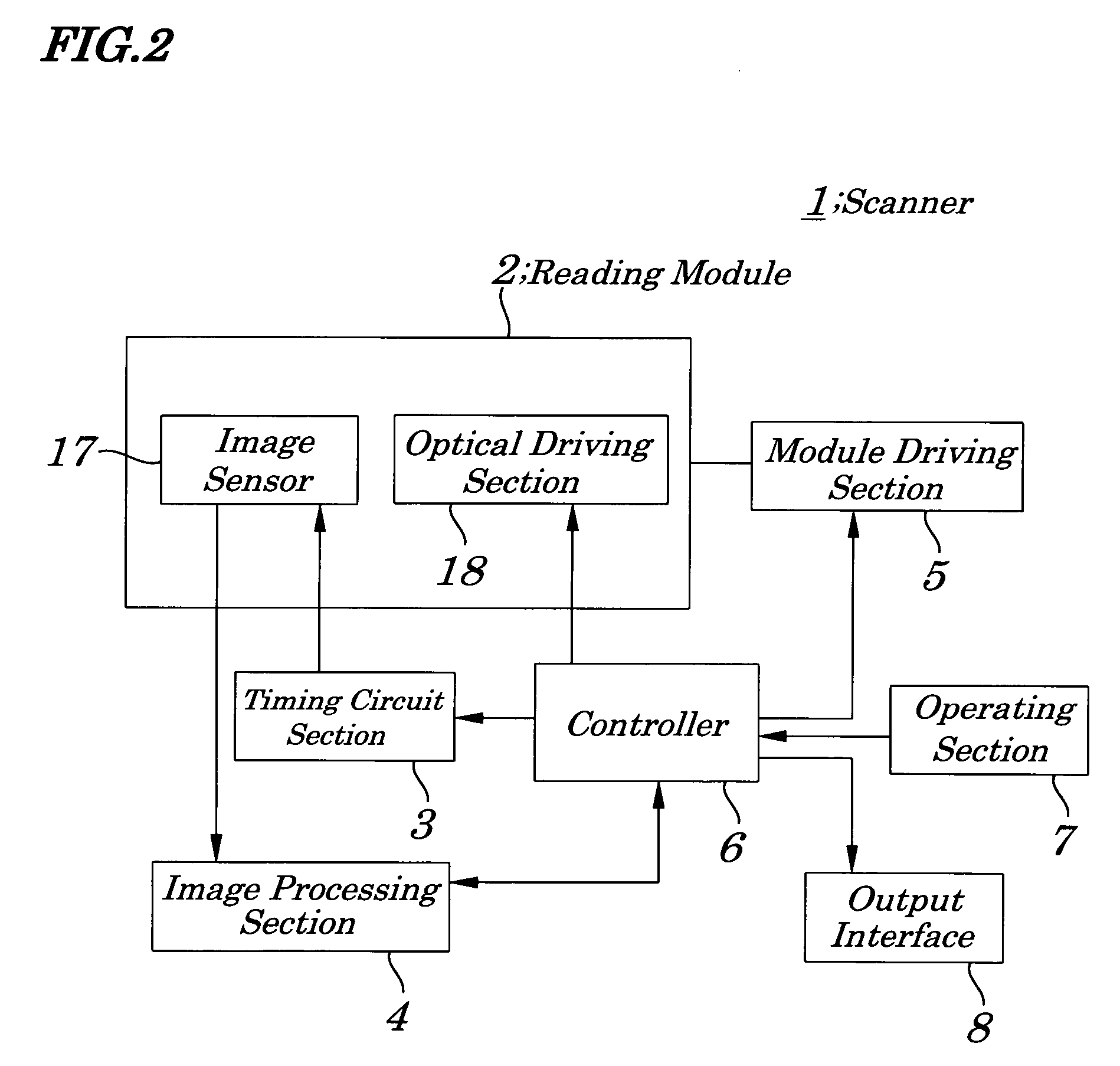Image reading device and method of scaling up or down image to be read
- Summary
- Abstract
- Description
- Claims
- Application Information
AI Technical Summary
Benefits of technology
Problems solved by technology
Method used
Image
Examples
first embodiment
[0055]FIG. 1 is a diagram schematically showing configurations of a reading module 2 of a scanner 1 according to a first embodiment of the present invention. FIG. 2 is a block diagram showing configurations of the scanner 1 of FIG. 1. FIG. 3 is a schematic diagram for explaining configurations of the scanner 1 of FIG. 1. FIG. 4 is a block diagram showing configurations of an optical driving section 18 of the reading module of FIG. 1. FIG. 5 is a schematic diagram for explaining configurations of a mirror driving section 21 making up the optical driving section 18 of FIG. 4. FIG. 6 is a block diagram showing configurations of a controller 6 of the scanner 1 of FIG. 1. FIG. 7 is a schematic diagram for explaining operations of the reading module 2 of FIG. 1.
[0056] The scanner 1, as shown in FIG. 1, performs operations of reading of an original document along a main scanning direction M (FIG. 3), which includes the reading module 2 (FIG. 2) being movable along a sub-scanning direction...
second embodiment
[0075]FIG. 8 is a diagram schematically showing configurations of a reading module 2A of a scanner according to a second embodiment of the present invention. FIG. 9 is a schematic diagram for explaining operations of the scanner of the second embodiment.
[0076] Configurations of the reading module 2A of the second embodiment differ from those of the reading module 2 of the first embodiment in that a first mirror 12 is moved out of an optical path and a fourth mirror 15 is made to be driven. Configurations other than described here are approximately the same as those of the first embodiment and their descriptions are omitted or simplified accordingly, by using a same numeral in FIG. 8, concerning a same component as that shown in FIG. 5.
[0077] A reading module 2A of the scanner of the second embodiment, as shown in FIG. 8, includes a light source 11, a first mirror 12, second mirror 13, third mirror 14, and fourth mirror 15 all being arranged on an optical path to reflect light havi...
PUM
 Login to View More
Login to View More Abstract
Description
Claims
Application Information
 Login to View More
Login to View More - R&D
- Intellectual Property
- Life Sciences
- Materials
- Tech Scout
- Unparalleled Data Quality
- Higher Quality Content
- 60% Fewer Hallucinations
Browse by: Latest US Patents, China's latest patents, Technical Efficacy Thesaurus, Application Domain, Technology Topic, Popular Technical Reports.
© 2025 PatSnap. All rights reserved.Legal|Privacy policy|Modern Slavery Act Transparency Statement|Sitemap|About US| Contact US: help@patsnap.com



